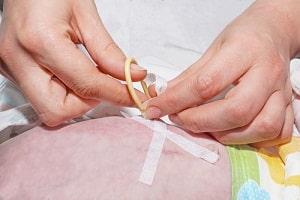Chicago, IL 60601
FREE CONSULTATIONS 312-462-4200
TOLL FREE 833-462-4200
What Is a G-Tube Placement for a Child With Cerebral Palsy?

One of the biggest concerns for many children with cerebral palsy due to a birth injury is malnutrition. For decades, struggles with diminished growth and inadequate nutrition were considered an unavoidable part of living with severe cerebral palsy. Now, thanks to advances in medical technology, CP sufferers have more options for care than ever. One option for children who struggle with oral motor dysfunction or dysphagia is gastrostomy feeding or using a “G-tube.” If you are a parent of a child with CP, you may be wondering what is involved in a G-tube placement and whether this option is right for your child.
How Does a G-Tube Work?
A gastrostomy is a feeding tube that is inserted through a small hole in a person’s abdomen for the purposes of hydration, nutrition, and medication administration. Most G-tubes involve a pump or gravity drip that allows formula or medication to be introduced directly into the stomach. Parents may also use a syringe to administer medication or formula through the feeding tube. Many parents of children with CP are wary of feeding tubes, because the thought of a tube being placed through their child’s abdominal wall is an understandably frightening prospect. While a gastrostomy is not appropriate for every case, many parents of children with severe CP find that a G-tube helps their child receive the nutrition they need.
How Are G-Tubes Placed?
There are several different procedures used to put in a G-tube, and the choice will depend on the patient’s circumstances and needs. G-tubes are inserted into a person’s abdomen through a small opening called a stoma. The process for creating the stoma often involves a surgical procedure that is conducted while the patient is under general anesthesia. During a percutaneous endoscopic gastrostomy (PEG), an endoscope with a camera attached to it is threaded through the patient’s mouth and into his or her stomach. The camera allows the doctors to find the correct location for the stoma. A small incision is then made in the abdominal wall through which the feeding tube will eventually be placed. It is important to talk to your child’s doctor if you want to learn more about whether or not a G-tube may be beneficial for your child.
Contact a Chicago Birth Injury Lawyer
Cerebral palsy is a complicated condition that can significantly impact a child’s life. In the majority of cases, a child develops cerebral palsy after suffering from brain damage before or during birth. Some birth injuries are unavoidable, while others are a result of a medical error. If a child develops cerebral palsy due to medical negligence, the child and his or her parents may be eligible for compensation through a medical malpractice claim. To learn more, contact the Birth Injury Law Alliance at 312-462-4200 to schedule a free, no-obligation consultation with our skilled Illinois birth injury attorneys.
Sources:
https://www.aacpdm.org/UserFiles/file/gastronomy-feeding.pdf
https://together.stjude.org/en-us/diagnosis-treatment/procedures/feeding-tube-placement-for-enteral-feeding/placement-gastrostomy-g-gastro-jejunostomy-gj-jejunostomy-j-tubes.html





